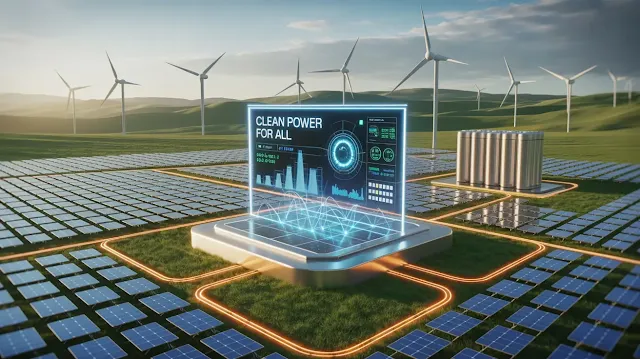Integrated Renewable Energy: The Future of Sustainable Power
How Combining Clean Energy Sources Is Reshaping Global Power Grids
As global climate pressures escalate and energy demand soars, relying on a single source of renewable energy is no longer practical. The world is now moving toward integrated renewable energy systems—innovative models that combine solar, wind, hydro, and bioenergy into a unified power ecosystem. This approach not only ensures a consistent energy supply but also strengthens sustainability and economic resilience.
What Are Integrated Renewable Energy Systems?
The Concept Behind Hybrid Clean Energy Solutions
Integrated renewable energy systems blend multiple clean power technologies into a single operational framework. A typical model may include solar panels and wind turbines working in tandem, supported by energy storage and smart-grid management software. The idea is simple yet powerful: when one source underperforms, another steps in to stabilize supply.
Why Integration Matters in Today’s Energy Landscape
Overcoming the Limitations of Single-Source Renewables
One of the biggest challenges in renewable energy is intermittency. Solar panels don't work at night. Wind turbines slow down on calm days. By integrating these sources, we minimize downtime and improve overall energy output. This hybrid strategy is especially vital for off-grid regions and remote communities, offering them continuous power without relying on fossil fuels.
The Mechanics of a Hybrid Renewable Model
A Closer Look at System Components
A well-designed integrated system typically includes:
Solar energy for daytime power generationWind turbines for nighttime or seasonal use
Hydropower or bioenergy to stabilize supply during low-output periods
Battery or thermal storage systems to retain excess energy
Artificial intelligence and smart controls for real-time optimization
These components are orchestrated by smart software that adjusts energy flows based on demand, availability, and environmental conditions.
Global Case Studies: From Concept to Reality
Successful Projects Driving the Renewable Shift
Morocco’s Ouarzazate Power Station integrates solar and wind energy with advanced thermal storage, ensuring a constant supply even after sunset.
India’s rural microgrids combine solar panels with biogas generators to power isolated villages, improving quality of life while reducing carbon emissions.
Chile and Kenya are also advancing hybrid models to boost national grid stability.
Artificial Intelligence: The Smart Heart of Integration
Optimizing Performance with Real-Time Data
AI and machine learning play a critical role in integrated energy systems by:
Predicting weather patterns and adjusting energy allocationMonitoring performance of each energy source
Automating maintenance and troubleshooting
Enhancing storage usage to avoid energy waste
This results in better efficiency, lower operating costs, and reduced environmental impact.
Major Benefits of Integrated Clean Energy
Why This Model Is Gaining Global Momentum
Stable electricity supply, even in unstable climatesImproved land-use efficiency, especially in space-constrained regions
Lower greenhouse gas emissions through clean source synergy
Energy independence for rural or underserved areas
Increased return on investment via optimized generation and storage
Challenges Still to Be Addressed
Barriers to Widespread Implementation
Despite its potential, integrated renewable energy faces challenges such as:
High initial setup costs for multi-source systemsComplexity in design and maintenance
Policy gaps and limited regulatory support in some regions
Storage limitations, especially in developing nations
Governments, investors, and innovators must collaborate to overcome these barriers and scale the benefits.
Grid Connectivity and Smart Distribution
Linking Hybrid Systems with National Infrastructure
More countries are now connecting integrated systems to national grids, allowing them to feed in surplus energy and draw power during low-output times. This bidirectional flow helps stabilize electricity prices and strengthens energy security.
Vision for the Future: Sustainable and Smart Cities
Decentralized Power for a Greener Tomorrow
Cities of the future are being built around microgrids powered by integrated renewables. These urban hubs will rely on localized solar, wind, and water-based systems, backed by AI and energy-sharing platforms. This transition supports energy democracy and lowers the carbon footprint of entire regions.
Conclusion: Integrated Renewable Energy Is the New Standard
Clean Power That Works Together, Not Alone
Integrated renewable energy isn’t just a trend, it’s the evolution of how the world generates and distributes electricity. By blending the strengths of multiple green sources and managing them with smart technology, we can create cleaner, more reliable, and more efficient energy systems.
This model holds the key to combating climate change, powering underserved communities, and building a sustainable global energy future.




Write a comment, your opinion matters to us